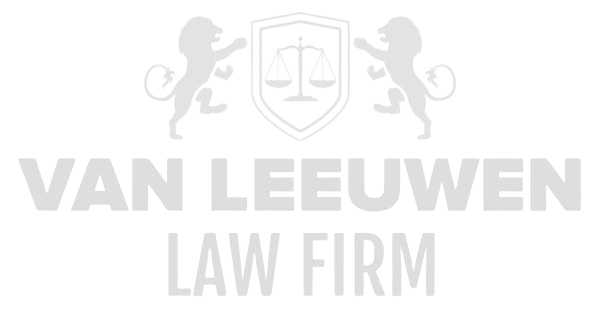The consumer goods and retail sector represents one of the fundamental pillars of the modern economy, encompassing a complex network of activities and strategic decisions that connect production, distribution, and sales. This sector is primarily responsible for delivering products that directly meet the daily needs and desires of consumers. The range of products is extraordinarily diverse, spanning from food and beverages to fashion items, electronics, household appliances, and luxury goods. The intrinsic value of this sector extends beyond the mere provision of physical goods, encompassing the shaping and influencing of consumer behavior, the cultivation of brand loyalty, and the creation of a consumer-centric culture deeply intertwined with economic growth and societal trends. Retailers, ranging from large department stores and supermarket chains to specialized boutiques and innovative online platforms, play a central role as intermediaries between producers and end consumers, contributing to the availability, accessibility, and diversity of goods that shape consumers’ daily lives.
The sector faces immense pressure from a convergence of societal, economic, and technological forces that bring about profound transformations in traditional business models. The rise of e-commerce and digital payment methods has triggered a paradigm shift in consumer behavior, blurring the boundaries between physical and virtual shopping experiences. At the same time, growing awareness of sustainability and ethical production practices compels producers and retailers to critically assess the environmental impact of their operations and to restructure their business models accordingly. These transformations are further intensified by global economic fluctuations, evolving consumer preferences, and technological innovations, challenging companies not only to operate efficiently but also to anticipate future consumer needs and implement innovations that ensure long-term competitiveness.
Structure and Functioning of the Sector
The structure of the consumer goods and retail sector consists of a dynamic interplay of functional and operational segments, each contributing crucially to the overall functioning of the sector. On one side, the sector encompasses the production and distribution of goods, which are manufactured, tested, and distributed based on detailed analyses of consumer needs and market trends. The production process itself is a complex interaction of research and development activities, design innovation, quality control, and large-scale manufacturing, leveraging advanced technologies and methods to ensure both efficiency and product excellence. On the other side, retail serves as the primary interface with consumers, where products are presented, promoted, and sold through both physical stores and digital platforms.
The functioning of the sector relies on a continuous interaction between supply and demand, with consumer behavior, economic conditions, and technological advancements playing decisive roles. Consumer behavior drives product development, marketing strategies, and distribution methods, while economic factors such as inflation, unemployment, and purchasing power shape consumer spending patterns and influence overall sector performance. Technological progress transforms operational structures, as digital marketing, e-commerce, data analytics, and automation enhance supply chain efficiency and increase product accessibility for a broader audience.
Within this context, distribution of goods constitutes a strategic function, where wholesalers, distribution centers, and logistical networks act as essential mechanisms to ensure products are timely and adequately available to retailers and consumers. The logistics dynamic encompasses complex processes such as inventory management, transport optimization, supply chain integration, and ensuring seamless delivery, both for physical stores and online orders. The sector requires a meticulous and coordinated approach to anticipate market fluctuations, seasonal trends, and unexpected disruptions in the chain, necessitating continuous innovation and evaluation within operational and strategic frameworks.
Production and Distribution of Consumer Goods
The production of consumer goods is a multidimensional process that begins with identifying consumer needs and market opportunities. The development process requires in-depth research into consumer trends, demographic data, psychographic insights, and competitive analysis. Product development encompasses concept creation, prototyping, testing, and refinement, ensuring that functionality, aesthetics, and user experience align with market expectations. This phase is crucial to the product’s success, as any mismatch between product attributes and consumer expectations may result in decreased sales and reputational damage.
Once product development is complete, manufacturing is carried out on a large scale, integrating quality control and process optimization. Efficiency, consistency, and adherence to safety and quality standards are critical. Advanced production techniques, including automated assembly lines, robotics, and sensor technology, enhance productivity and minimize errors. At the same time, sustainability and environmental considerations have become increasingly significant, with companies striving to minimize waste, improve energy efficiency, and incorporate environmentally friendly materials into production processes.
Distribution forms the link between production and the consumer, encompassing warehouse management, transportation networks, and logistical operations. Strategic distribution involves balancing speed, cost, and reliability, while the rise of e-commerce adds further complexity due to the need for fast delivery, return logistics, and multi-channel fulfillment. Logistical efficiency and strategic planning are essential to ensure products are available at the right place and time, with real-time data analysis and predictive logistics playing an increasingly pivotal role in anticipating demand patterns.
Retail and Consumer Behavior
Retail functions as the primary interface between producers and consumers, where sales, marketing, and customer interaction converge. Retailers operate through a wide array of channels, ranging from traditional brick-and-mortar stores and department stores to sophisticated digital platforms and mobile applications, each with its own advantages and challenges. Retail success is heavily dependent on the ability to provide a seamless and engaging shopping experience, where product presentation, brand positioning, and customer engagement are central to operational strategy.
Consumer behavior lies at the core of strategic decision-making within retail. Analysis of purchasing patterns, preferences, seasonal trends, and technological interactions provides insights that allow retailers to optimize product offerings, marketing campaigns, and customer engagement strategies. Consumer behavior is increasingly shaped by digital technologies, as online research, comparison tools, social media, and digital advertising play a decisive role in purchase decisions. To remain competitive, retailers implement omnichannel strategies that integrate physical and digital experiences, creating a consistent brand experience across all touchpoints.
Retailers’ responsiveness to trends and changing lifestyles is critical. Fashion, technological innovation, cultural preferences, and economic conditions drive demand and dictate which products should be available and how they are presented. Retailers must combine agility and speed with a profound understanding of consumer behavior, leveraging real-time data and feedback to guide decisions and implement strategic adjustments that maximize both revenue and customer satisfaction.
Technology and Innovation in Retail
Technology has fundamentally transformed the foundations of retail, with digitalization, automation, and data analytics at the heart of modern business models. E-commerce platforms have blurred traditional shopping boundaries, enabling consumers to discover, compare, and purchase products and services from the comfort of their homes. Innovative business models, including direct-to-consumer sales, subscription services, and digital marketplaces, have added a new dimension to the sector, allowing retailers to expand reach, efficiency, and engagement.
Artificial intelligence and machine learning increasingly analyze consumer behavior and personalize the shopping experience. AI-powered chatbots, virtual assistants, and recommendation engines assist consumers in decision-making and enhance the efficiency of customer service operations. Big data analytics also enable retailers to predict trends, understand purchasing behaviors, optimize inventory management, and dynamically adjust marketing strategies.
Innovative technologies such as augmented reality and virtual reality transform the shopping experience by providing interactive and immersive product presentations. Consumers can virtually experience products before making a purchase, increasing conversion rates and enhancing satisfaction. Blockchain technology enhances transparency and traceability in the supply chain, ensuring product reliability, certification management, and the integrity of the entire network.
Sustainability and Corporate Social Responsibility
Sustainability and corporate social responsibility have become core aspects of the consumer goods and retail sector, with the environmental and social impacts of business operations closely scrutinized. Consumers increasingly value ethically produced, environmentally friendly, and transparently labeled products, compelling companies to integrate sustainable practices into product development and operational frameworks. Waste reduction, reuse, recycling, and minimizing ecological footprints have become essential strategies for improving both reputation and operational efficiency.
Corporate social responsibility extends to fair labor practices, ethical sourcing, and contributions to local communities. Retailers and producers must demonstrate accountability for their impact and communicate transparently about sustainability performance. This includes supporting fair trade initiatives, fostering diversity and inclusion, and investing in social programs that contribute to community well-being.
Integrating sustainability and social responsibility also offers strategic advantages by strengthening brand value and customer loyalty. Companies that demonstrate tangible investments in ethical and sustainable practices earn consumer trust, differentiate themselves from competitors, and reinforce their market position in an environment increasingly driven by conscious consumption and societal expectations.
Regulation and Compliance
The consumer goods and retail sector operates within a complex regulatory framework designed to protect consumers and ensure fair trade practices. Product safety, labeling, consumer protection, and privacy are critical areas where companies must comply with stringent legal standards. Product safety regulations ensure that goods are free from harmful substances, function correctly, and pose no risk to consumers, while labeling provides accurate information about ingredients, origin, and usage instructions.
Consumer protection laws aim to prevent misleading practices, fraud, and unfair trade, giving consumers assurance and confidence in their purchases. Privacy regulations, such as the GDPR in the European Union, govern the handling of personal data, requiring companies to manage customer information securely, confidentially, and transparently, with strict protocols for collection, storage, and usage.
Regulatory compliance is not merely a legal obligation but also a strategic tool to enhance trust, reputation, and market positioning. Companies that effectively adhere to these requirements can minimize operational risks, avoid legal complications, and demonstrate to consumers that their interests and safety are taken seriously. The ongoing complexity and evolution of laws necessitate continuous evaluation, process adjustment, and strategic planning to operate in a compliant, efficient, and future-ready manner.
Financial and Economic Crime
The consumer goods and retail sector represents a complex and multifaceted domain that encompasses the production, distribution, and sale of goods and services to end consumers. This sector forms an indispensable link within the global economy, providing essential products that shape daily life—from basic foodstuffs and clothing to electronics and household items. The intricate nature of supply chains, the extensive financial transactions involved, and the high level of interaction with consumers create a landscape uniquely susceptible to financial and economic crime. Ensuring the integrity of operations in this sector demands a sophisticated, vigilant, and proactive approach capable of anticipating and mitigating risks across production, distribution, and retail.
The challenges posed by financial and economic crime are diverse, ranging from fraud and money laundering to corruption and cybercrime. Criminal actors exploit the sector’s complexity, scale, and reliance on both human and technological processes to pursue illicit gain. The consequences for businesses that fail to address these risks can be severe, including legal sanctions, reputational damage, and financial losses. Consequently, organizations must integrate comprehensive risk management frameworks, combine preventive and detective measures, and foster a corporate culture of transparency and accountability. Only through such systematic and unwavering vigilance can the sector maintain trust, safeguard assets, and ensure compliance with regulatory requirements.
1. Fraud in Production and Distribution
In the consumer goods and retail sector, fraud can infiltrate both the production and distribution stages, manifesting as product counterfeiting, deceptive labeling, or the deliberate use of substandard materials to reduce costs. Each instance of fraud carries significant implications for consumer safety, brand integrity, and financial stability.
For example, a manufacturer might deliberately incorporate counterfeit or inferior ingredients into food products to minimize expenses, potentially endangering public health and exposing the company to litigation. Similarly, distributors may divert stock for personal enrichment or channel products into illicit markets. Such fraudulent activity undermines the reliability of supply chains and damages corporate credibility.
To combat these risks, companies must deploy rigorous internal controls and quality assurance systems. This entails meticulous supplier verification, implementation of traceability mechanisms, and routine audits of production and distribution processes. Proactive monitoring and continuous assessment are essential to prevent, detect, and address fraud before it escalates into systemic operational or reputational crises.
2. Money Laundering through Retail Transactions
The consumer goods and retail sector can inadvertently facilitate money laundering due to the sheer volume of cash transactions and the complexity of retail sales and distribution networks. Criminals may attempt to legitimize illicit funds through irregular transactions, including inflated sales figures, fictitious returns, or complex multi-entity arrangements.
For instance, a retailer may receive substantial cash payments under the guise of legitimate purchases, concealing illegal financial flows within the ostensibly lawful retail framework. Such practices exploit both transactional opacity and the fragmentation of organizational structures to obscure the origin of funds.
Addressing these risks requires a comprehensive anti-money laundering (AML) strategy encompassing robust customer due diligence, meticulous transaction monitoring, and mandatory reporting of suspicious activity. Advanced technological tools, including algorithmic detection systems and artificial intelligence, can enhance the identification of anomalous transactions, thereby reducing exposure to illicit financial flows.
3. Corruption and Bribery in Procurement and Supplier Relationships
Procurement and supplier engagement present critical vulnerabilities to corruption and bribery in the retail and consumer goods sector. Bribes may be offered to secure contracts, influence supplier selection, or manipulate purchasing decisions for personal or corporate benefit.
For example, a supplier might offer financial incentives to obtain exclusive contracts or prioritize specific product lines, thereby distorting market competition and potentially compromising product quality. Corruption in procurement can have cascading consequences, from legal sanctions to erosion of stakeholder trust.
Mitigation requires strict ethical frameworks and anti-corruption policies. Organizations should perform regular audits of supplier interactions, provide staff training on ethical conduct, and cultivate a culture of transparency and integrity. Proactive ethical governance ensures fair competition and reinforces corporate accountability at all operational levels.
4. Cybercrime and Data Security in E-Commerce and Digital Sales Channels
The rapid expansion of e-commerce and digital sales platforms has exposed consumer goods and retail companies to heightened cybercrime risks. Cybercriminals target customer data, payment information, and sensitive operational systems through phishing attacks, malware, and other forms of cyber intrusion.
Successful cyberattacks can generate severe financial losses, reputational harm, and regulatory penalties, particularly when data protection laws such as the General Data Protection Regulation (GDPR) are violated. The consequences extend beyond immediate operational disruption, affecting consumer trust and market positioning.
Mitigation strategies must include robust cybersecurity infrastructure, such as advanced firewalls, encryption protocols, and continuous monitoring of IT systems. Regular penetration testing, staff cybersecurity training, and the development of a comprehensive incident response plan are critical components to safeguard sensitive information and preserve operational integrity.
5. Internal Fraud and Unethical Behavior within Retail Organizations
Internal fraud and unethical conduct represent significant threats within retail organizations, often facilitated by employees with access to financial resources, inventory, or consumer data. Fraudulent acts can include inventory theft, manipulation of sales figures, or abuse of discount systems for personal advantage.
Preventing internal fraud necessitates strong internal controls, clear ethical policies, and a corporate culture that emphasizes integrity and transparency. Regular audits, strict access controls, and open channels for reporting suspicious activity are foundational to minimizing risks.
Establishing a comprehensive ethics policy and compliance program enables organizations to proactively manage internal threats. Such measures not only protect assets but also reinforce accountability, promote ethical behavior, and sustain confidence in the integrity of organizational operations.
Privacy, Data, and Cybersecurity
The consumer goods and retail sector constitutes a vast and dynamic component of the global economy, encompassing an extensive array of products and services ranging from food and clothing to household appliances and electronics. The sector plays an indispensable role in the daily lives of consumers, bridging physical stores and online platforms in ways that have transformed shopping behaviors. Central to its operation is the processing of customer data, which underpins the optimization of customer interactions, targeted marketing strategies, inventory management, and personalized service. However, the handling of such data introduces significant challenges in the realms of privacy, data protection, and cybersecurity, exposing companies to legal, financial, and reputational risks. A systematic and proactive approach is therefore essential to ensure compliance, safeguard sensitive information, and preserve the integrity of the consumer experience.
Data breaches, cyberattacks, and regulatory non-compliance represent critical threats that can erode consumer trust and expose organizations to severe consequences. The increasing reliance on digital channels, e-commerce platforms, and integrated systems has amplified vulnerabilities, requiring companies to adopt cutting-edge technological solutions, robust policies, and comprehensive employee training. The following sections provide an in-depth analysis of the key challenges facing the sector in privacy, data security, and cybersecurity, highlighting both the risks and the strategic measures necessary for effective mitigation.
1. Protection of Customer Data and Personal Information
Retail companies manage extensive volumes of customer data, including personal identifiers, purchase history, payment information, and individual preferences. This information is indispensable for refining the customer experience, enabling personalized offers, and driving marketing efficiency. However, safeguarding this data against unauthorized access, misuse, or exposure is a persistent and complex challenge.
A concrete example of this challenge is the risk posed by data breaches, which may occur through vulnerabilities in e-commerce platforms, inadequately secured databases, or compromised payment systems. The ramifications of such breaches extend beyond regulatory penalties, encompassing significant reputational harm, erosion of consumer confidence, and potential financial losses.
Effective mitigation requires the deployment of advanced security measures, including encryption of sensitive data, secure payment processing systems, regular security audits, and strict compliance with data protection regulations such as the General Data Protection Regulation (GDPR) and the California Consumer Privacy Act (CCPA). By implementing these measures, companies can protect consumer data integrity and demonstrate their commitment to responsible data stewardship.
2. Compliance with Privacy Laws and Regulations
The regulatory landscape governing privacy and data protection is complex and continually evolving, with significant variation across jurisdictions. Laws such as GDPR in Europe and CCPA in the United States impose stringent requirements on data collection, storage, processing, and sharing, demanding careful attention from retail companies.
For example, adhering to GDPR mandates explicit customer consent prior to data collection, the provision of clear privacy notices, and mechanisms allowing customers to access, manage, or request deletion of their data. Organizations must also establish processes for timely reporting of breaches to both regulators and affected individuals, ensuring transparency and accountability.
Compliance demands continuous review and adaptation of internal policies, procedures, and systems. Retailers must regularly update privacy frameworks to align with emerging legal requirements, enforce robust internal controls, and maintain documentation demonstrating adherence to statutory obligations.
3. Securing Online Transactions and E-Commerce Platforms
The exponential growth of e-commerce has heightened the exposure of retail organizations to cyber threats. Online transactions, digital communications, and integrated platforms create multiple points of vulnerability, necessitating stringent security measures.
A concrete example is the threat of phishing attacks, malware, and other malicious interventions aimed at compromising payment data or customer accounts. Unauthorized access to transactional systems can result in financial loss, reputational damage, and regulatory scrutiny.
Mitigation involves implementing end-to-end security measures such as SSL certificates, fraud detection software, and regularly updated platform security protocols. Continuous monitoring, timely patching of vulnerabilities, and employee vigilance are crucial for maintaining transactional integrity and safeguarding customer trust.
4. Securing Employee and Business Data
Beyond customer information, retail companies manage sensitive internal data, including employee records, financial statements, and operational intelligence. Protecting this information is essential for business continuity and the prevention of data leakage or misuse.
For example, internal threats arise when employees access confidential information without authorization or exploit system vulnerabilities for personal gain. Such incidents can disrupt operations, compromise compliance, and damage corporate credibility.
To mitigate these risks, organizations must enforce strict access control policies, implement role-based permissions, conduct regular audits, and promote security awareness training for staff. A proactive security culture ensures that internal data is consistently protected and operational risks are minimized.
5. Securing Point-of-Sale (POS) Systems
POS systems are critical nodes in both physical and digital retail operations, serving as the interface for customer transactions. These systems are frequent targets for cybercriminals seeking to access payment information and personal data.
A specific example of this challenge is POS breaches, where attackers exploit system vulnerabilities to exfiltrate credit card information or manipulate transaction records. Such breaches can lead to financial liabilities, regulatory penalties, and severe reputational damage.
Protection requires end-to-end encryption of payment data, regular software updates, configuration of secure network environments, and deployment of POS-specific cybersecurity solutions. Routine vulnerability assessments and strict adherence to security best practices are essential for safeguarding these transactional systems.
6. Managing Third-Party and Vendor Access
Retailers rely extensively on third-party vendors and service providers, who frequently have access to systems and sensitive data. Managing these external interfaces is critical to maintaining security and regulatory compliance.
A concrete example is the risk of breaches stemming from vendors that fail to comply with security protocols, potentially exposing customer or business data. Retailers must conduct thorough due diligence, enforce contractual obligations regarding data protection, and regularly audit vendor practices.
Securing system integrations and data exchanges, monitoring vendor compliance, and maintaining rigorous oversight of third-party access are essential strategies for mitigating external threats. These measures ensure that operational dependencies do not become systemic vulnerabilities.
7. Securing Customer Service and Support Systems
Customer service and support systems handle sensitive information during interactions aimed at resolving issues or answering inquiries. Securing these channels is vital to prevent exposure of customer data to unauthorized access.
A concrete example is safeguarding communications via email, chatbots, or telephone support against interception or misuse. Retailers must employ encryption, secure storage, and employee authentication protocols to protect sensitive information.
Additionally, robust security policies, secure system configurations, and training customer service staff in data protection practices are essential. Ensuring that all interactions are secure preserves consumer trust and strengthens organizational credibility.
8. Employee Training and Awareness
Employees are the first line of defense in maintaining privacy and cybersecurity within retail organizations. Training and awareness initiatives are vital to mitigate human error, internal threats, and inadvertent data exposure.
A specific example is the provision of structured training on recognizing phishing attempts, securely handling data, and adhering to company cybersecurity policies. Employees must remain vigilant against evolving cyber threats and internal compliance lapses.
Developing a culture of security, promoting reporting mechanisms for suspicious activity, and engaging staff in continuous education programs ensures a resilient workforce. By cultivating awareness and accountability, organizations can significantly reduce risks and enhance the integrity of both data management and operational security.















